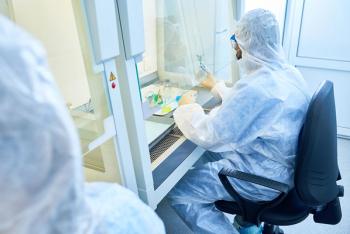
Fundamentals Favorable in Global Biotechnology Industry
Boston, MA (May 8)-The global biotechnology industry showed several positive signs in 2006, including increases in overall revenues and financing, although the industry as a whole continues to operate at a loss, according to Ernst & Young's annual analysis of the biotechnology industry.
Boston, MA (May 8)-The global biotechnology industry showed several positive signs in 2006, including increases in overall revenues and financing, although the industry as a whole continues to operate at a loss, according to Ernst & Young’s (New York, NY,
The global biotechnology industry posted revenues (based on revenues of publicly traded companies) of $73.5 billion in 2006, a 14% gain over 2005. The US accounted for 75% of total revenues or nearly $55.5 billion, and Europe accounted for $11.5 billion. On a global basis, the total number of publicly traded companies increased 5% to 710 in 2006, with 336 companies in the United States and 156 in Europe. The total number of public and private companies increased modestly, 0.3%, on a global basis to 4275, with 1452 of those companies in the United States and 1621 in Europe.
Other fundamentals were strong. Capital raised on a global basis increased 42% to $27.9 billion, the largest amount raised since 2000. Venture capital reached $5.4 billion, an all-time high in the global biotechnology industry, with gains of 38% in the United States and 47% in Europe.
Deal-making rises
Strong competition, particularly among pharmaceutical buyers, contributed to healthy mergers and acquisitions (M&A) activity in 2006. The average premium in M&A transactions with values over $500 million increased to 60% in 2006, more than twice the average M&A premium from 2003 to 2005.
“In many ways, 2006 was the year of the deal-but this is all the more remarkable because there was no one deal of the year,” said Glen Giovannetti, Ernst & Young’s global biotechnology leader, in a company release. “In prior years, high deal values were typically driven by a single mega deal, but in 2006 we now have widespread recognition among buyers of the potential value in biotech’s platforms and pipelines.”
In a reversal of recent trends, deal activity in 2006 showed that pharmaceutical buyers gravitated toward early-stage platforms and technologies.
US biotech industry moves to profitability
The revenues of publicly traded US biotech companies grew 14.2% in 2006 to $45.3 billion-below the 2005 growth rate and the industry’s historic compound annual growth rate, according to the Ernst & Young report. The industry’s revenues were lowered by two significant acquisitions-Novartis’s (Basel, Switzerland,
The US biotech industry posted a net loss of nearly $3.5 billion in 2006, a 151% increase over 2005, when it recorded a net loss of $1.4 billion. This increase was attributable to large acquired in-process research and development (IPR&D) charges related to certain acquisitions, explains the report. Factoring out the impact of these deal-related charges, which totaled in excess of $4 billion for the industry, the publicly traded US biotech industry would have shown an aggregate net profit for the first time in its history.
“We predicted profitability in the US industry before the end of the decade,” said Mike Hildreth, Americas biotechnology leader for Ernst and Young in a company release. “Only a strong deal year with high charges for in-process research and development kept the industry from reaching that goal.”
Newsletter
Get the essential updates shaping the future of pharma manufacturing and compliance—subscribe today to Pharmaceutical Technology and never miss a breakthrough.





